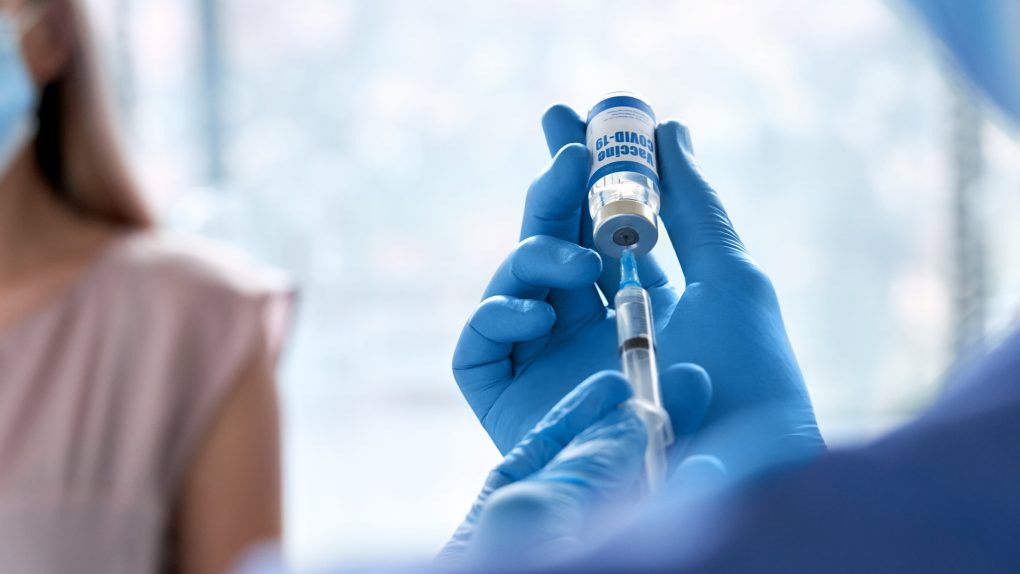- Dr. Fauci is urging people not to wait for Pfizer or Moderna’s COVID vaccine if they can get the Johnson & Johnson vaccine first.
- Both Pfizer and Moderna’s vaccines were found to be 95% effective at preventing a coronavirus infection in clinical trials.
- Johnson & Johnson’s COVID vaccine is 66% effective at preventing serious COVID infections. The efficacy rate, however, jumps to 86% when it comes to preventing mild COVID infections.
With Johnson & Johnson receiving an Emergency Use Authorization (EUA) from the FDA over the weekend, the US now has three effective COVID-19 vaccines at its disposal, a scenario that would have seemed implausible even five months ago.
While Pfizer and Moderna’s vaccines share a number of similarities — both rely upon the same mRNA technology and both have an impressive efficacy rate of 95% — Johnson & Johnson’s COVID-19 is markedly different. For starters, Johnson & Johnson’s vaccine doesn’t rely on mRNA technology and was instead based on the adenovirus, the virus responsible for the common cold. More jarring, though, is the fact that Johnson & Johnson’s COVID-19 vaccine has an efficacy rate in the range of 66%, markedly lower than Pfizer and Moderna’s vaccine.
In light of the above, some people have naturally expressed a preference for Pfizer or Moderna’s COVID-19 vaccine. This preference, however, is a bit misguided once one delves a bit deeper. For starters, the 66% efficacy rate encompasses infections that one would categorize as mild to severe. The efficacy rate jumps all the way up to 86%, however, when it comes to preventing severe infections exclusively. In other words, the 66% efficacy rate is more encouraging than it appears at first glance.
As a result, Dr. Fauci recently stressed that both vaccines are highly effective and that people should get whatever vaccine becomes available first. Put differently, there’s no reason to delay getting vaccinated in the hopes of receiving a vaccine from Pfizer or Moderna.
“The only way you really know the difference between vaccines is by comparing them head to head,” Fauci said during a TV interview over the weekend. “We have three highly efficacious vaccines that are safe and efficacious. That’s the bottom line and the J & J, if you look at them, particularly in things that we really care about, they’re important. It’s got greater than 85% efficacy after a severe disease and critical disease.”
Fauci also stressed that all three vaccines haven’t caused a single death or hospitalization in any country.
“The efficacy against severe disease greater than 85%, and there have been no hospitalization or deaths in multiple countries, even in countries that have the variants,” Fauci explained during an NBC interview recently.
Fauci himself said he would have no reservations about getting Johnson & Johnson’s vaccine.
“All three of them are really quite good and people should take the one that’s most available to them,” Fauci explained. “If you go to a place and you have J & J and that’s the one that’s available now, I would take it… I think people need to get vaccinated as quickly and as expeditiously as possible.”
Incidentally, vehicles carrying Johnson & Johnson’s new COVID-19 vaccine — which only requires a single dose — starting rolling out to delivery centers on Monday evening. Johnson & Johnson said it anticipates shipping an estimated 20 million doses before the end of the month. Pfizer and Moderna, meanwhile, have promised to deliver 140 million doses to the US over the next four weeks. All told, the US vaccination effort should see a huge uptick in dose administration throughout March and April.
In a best-case scenario, some health experts believe the US might be able to achieve herd immunity as soon as May. To this point, Dr. Marty Makary of Johns Hopkins penned the following in a Wall Street Journal op-ed last week:
There is reason to think the country is racing toward an extremely low level of infection. As more people have been infected, most of whom have mild or no symptoms, there are fewer Americans left to be infected. At the current trajectory, I expect Covid will be mostly gone by April, allowing Americans to resume normal life.
Since the pandemic began, the US has seen 28.6 million cases and nearly 515,000 COVID-related deaths.








